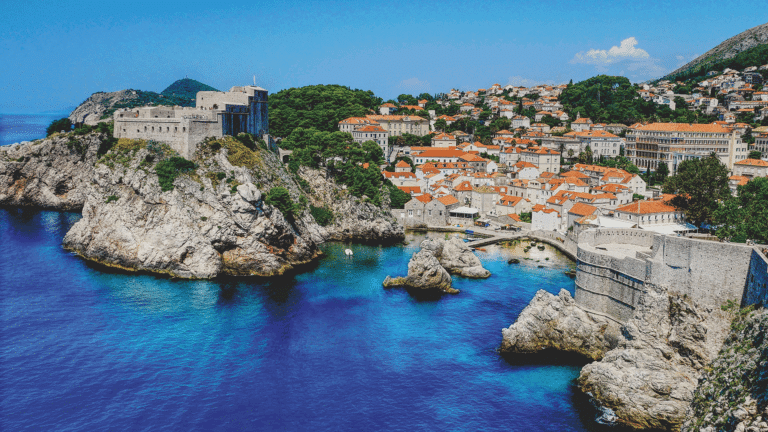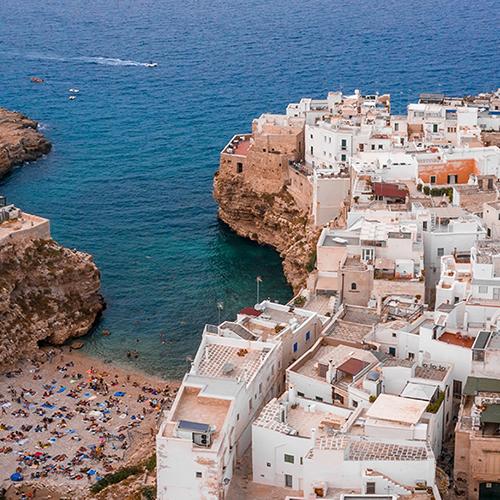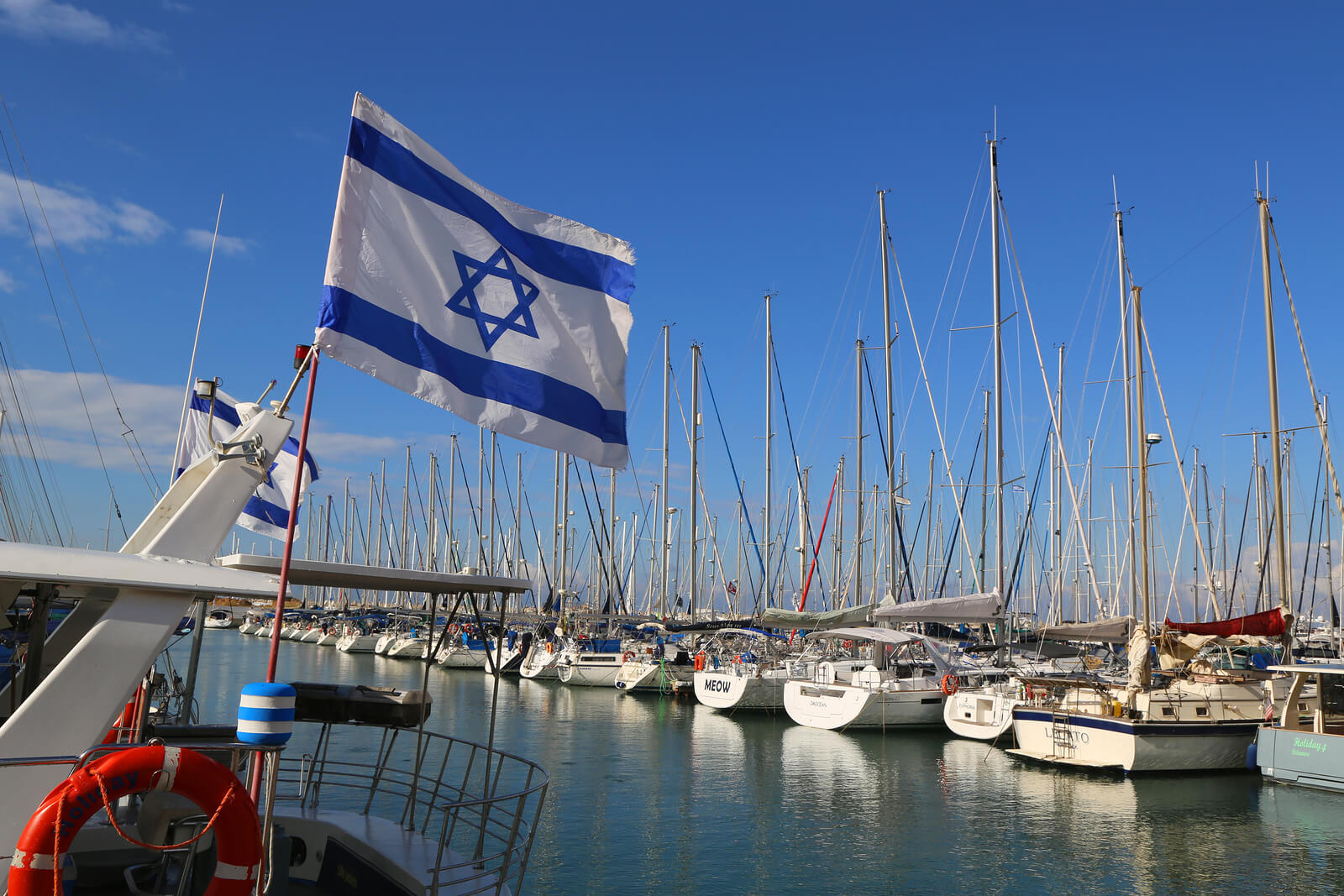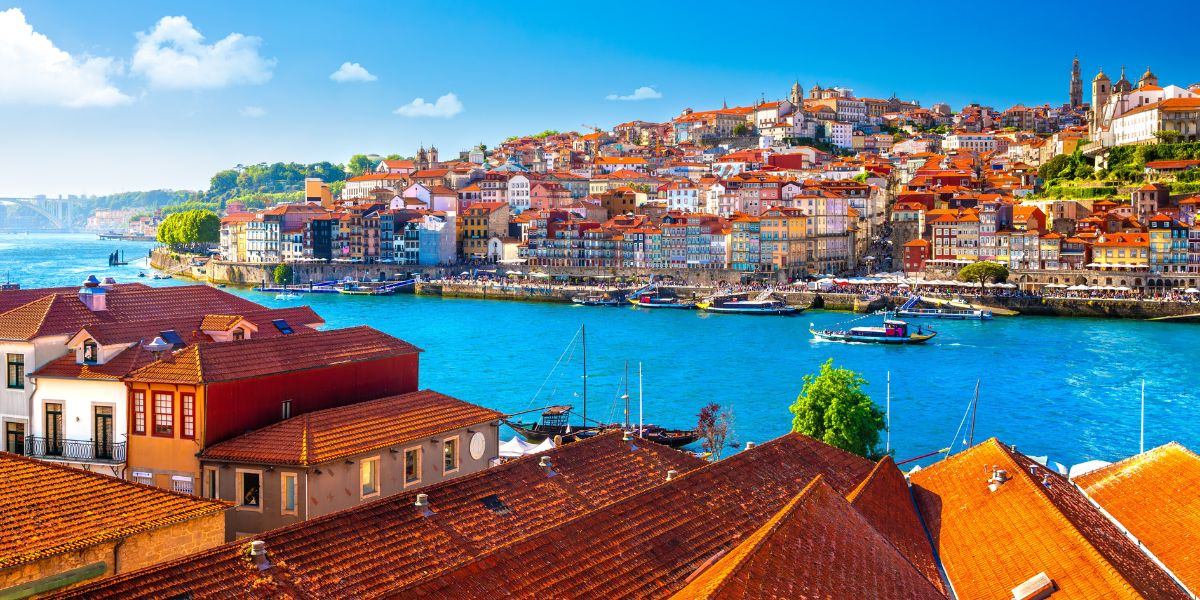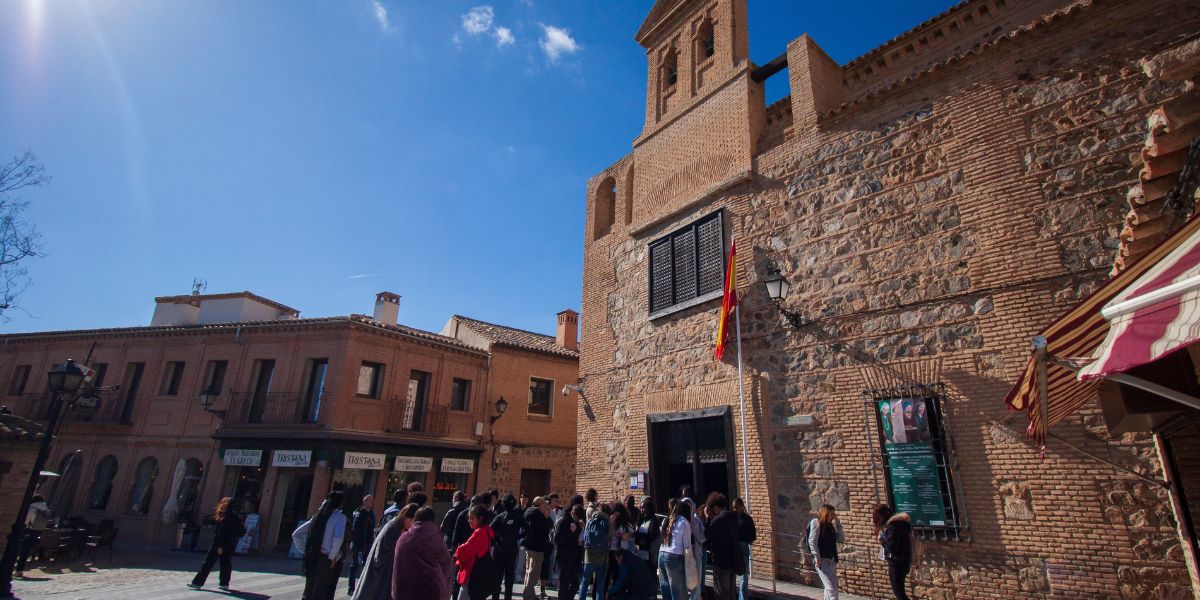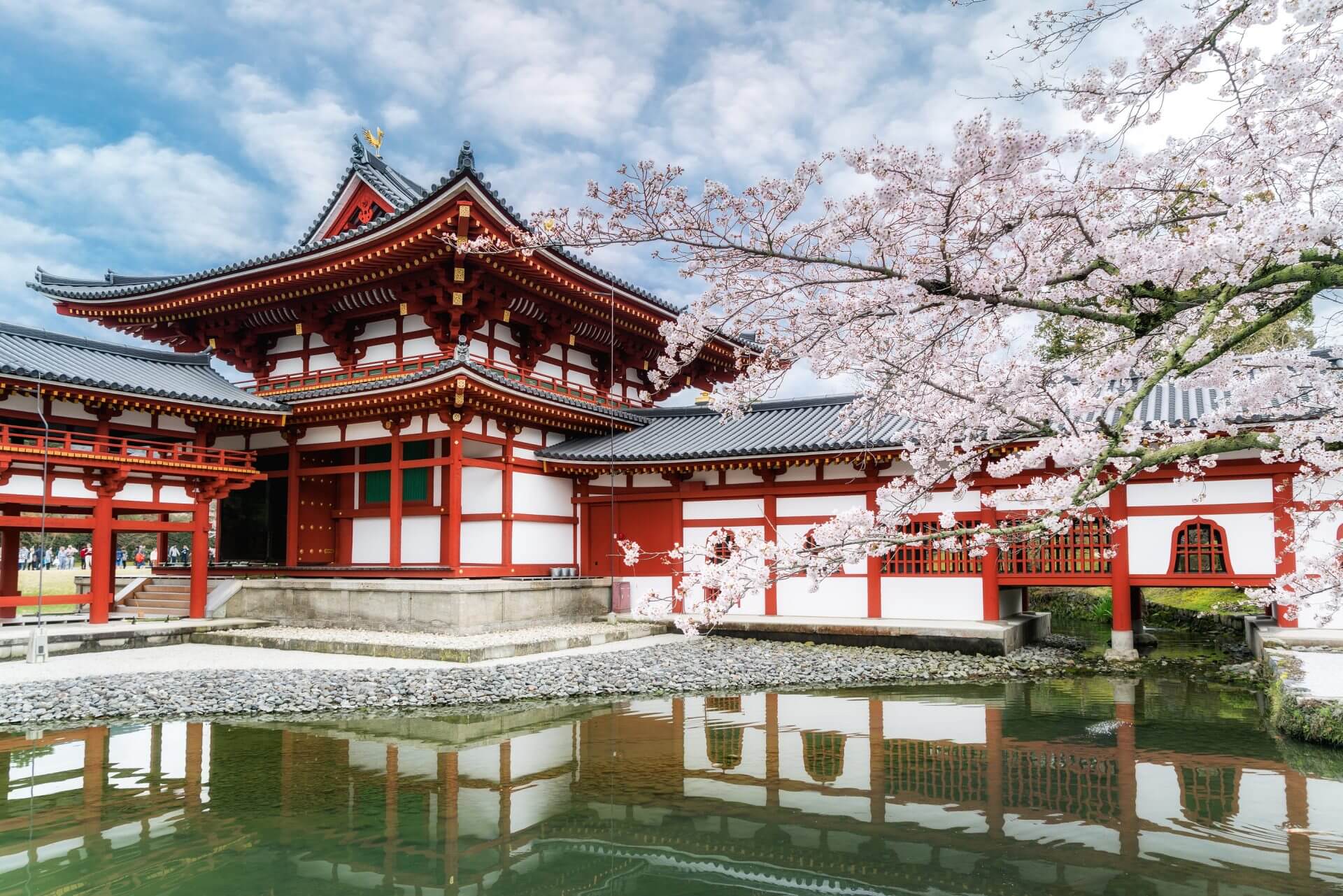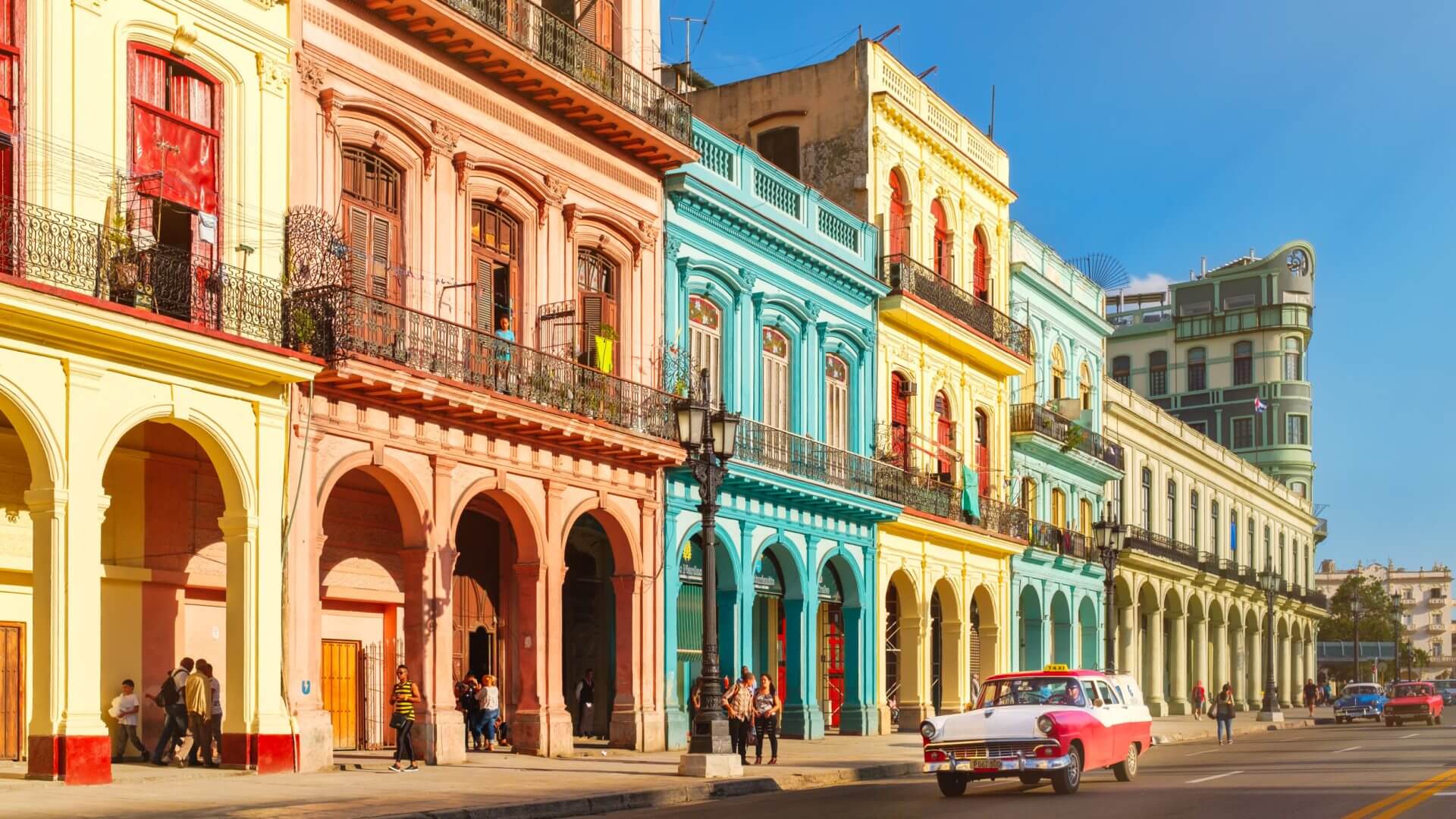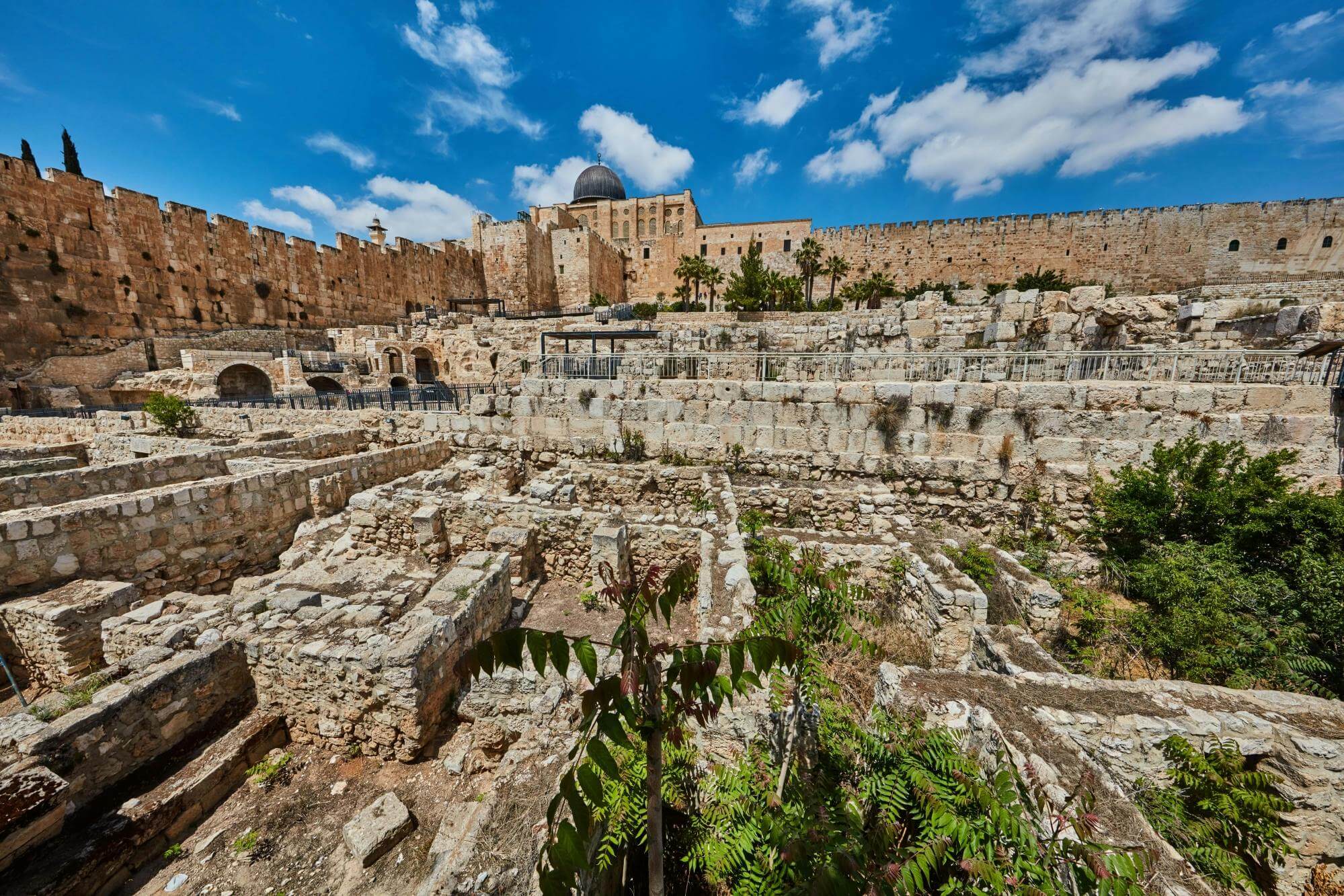Spain is home to one of the oldest and most significant Jewish communities in the world, dating back to the destruction of the first temple, whose contributions to art, science, philosophy, culture, and architecture are still highly regarded to this day. If you know where to look, Sephardic culture can still be found all over contemporary Spain, although much of it had been covered up or destroyed after the Inquisition. Learn all about Spanish Jewish history, its influences from Islam ad Christianity, influential Sephardic figures who shaped history, and the top Jewish heritage sites that survived and can be seen during a Jewish tour of Spain.
If you want to embark on a heritage trip to Spain that includes deep insight into medieval Sephardic history and architecture by local experts and exclusive cultural experiences, try booking a private Jewish heritage tour of Spain for a personalized and luxurious experience!
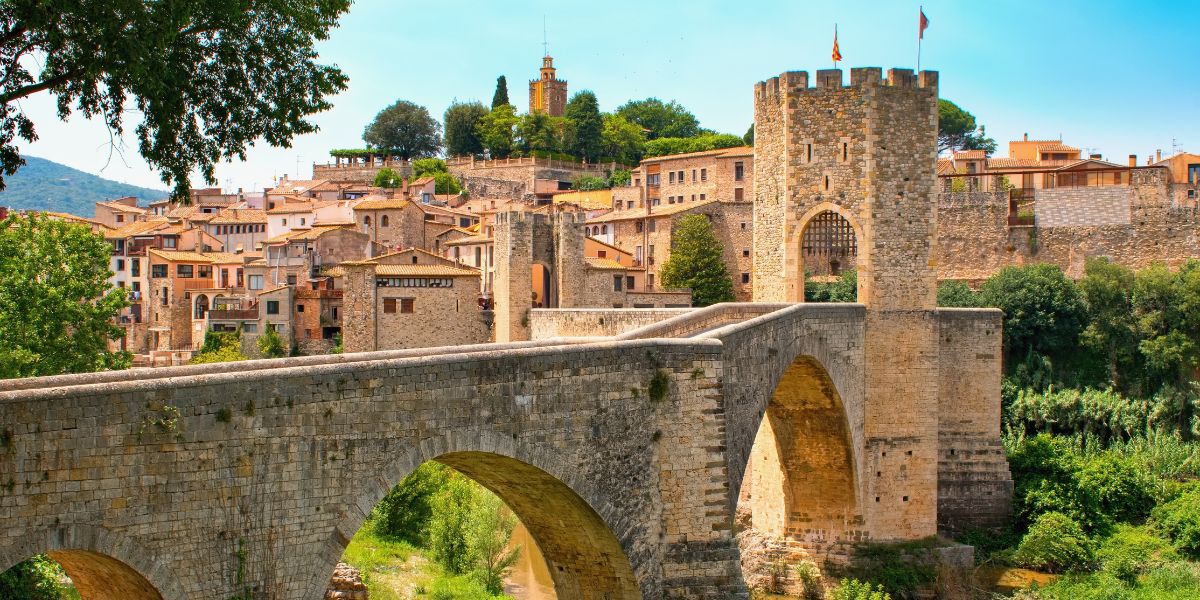
The Golden Age of Sephardic Culture in Spain
Sephardic Jewish Presence in Medieval Spain
Known as the Golden Age for Jews in Spain, the beginning of the Middle Ages was a time of overall prosperity, tolerance, and peace for Jews in the Iberian Peninsula under Muslim rule. Compared to the rest of Europe, Jews in Andalusian society were generally allowed to practice their faith openly and work without many restrictions for a big part of the Middle Ages. It produced some of the most prominent Jewish philosophers, mathematicians, astronomers, poets, and rabbinical scholars, such as Samuel Ha-Nagid, Moses ibn Ezra, Solomon ibn Gabirol, and Judah Halevi. During this time, many Jews from Europe and the Middle East immigrated to Iberia, creating a diverse and culturally robust community.
The end of the Golden Age started around the time of the Grenada massacre in 1066 and officially ended in the 12th and 13th centuries when Muslim rule became more oppressive and Christians reconquered Al-Andalus (the Muslim-ruled area of the Iberian peninsula). Between the 12th and 15th centuries under Christian rule, the Jews of Spain underwent turbulent times, including periods of great freedom, prosperity, and growth and times of oppression, persecution, and, ultimately, expulsion.
Historical Sephardic Figures and Their Contributions to Spanish Culture and Science
The contributions of Sephardic Jews to various fields have been remarkable and influential. From philosophy and literature to science and music, these individuals have left an indelible mark on Spanish, world, and Jewish history. Below is a list of 9 influential Sephardic Jews who led
- Maimonides – A philosopher, jurist, physician, and prolific writer of the Middle Ages
- Saadia Gaon – A prominent Jewish philosopher, biblical commentator, and translator
- Isaac Abravanel – Philosopher, theologian, commentator, and statesman
- Judah Halevi – A poet and philosopher known for writing The Kuzari
- Solomon ibn Gabirol – A poet and philosopher known for his influential work, The Fountain of Life
- Yosef Karo – Author of the Shulchan Aruch, the most widely accepted code of Jewish law
- Benjamin Disraeli – British Prime Minister and novelist
- Yitzhak Navon – Fifth President of Israel and author
- Baruch Spinoza – A philosopher who influenced modern biblical criticism, 17th-century rationalism, and Dutch intellectual culture
Jewish, Islamic, and Christian Influences in Sephardic Art
Throughout the Iberian Peninsula, medieval Sephardic art flourished, mainly in poetry, painting, architecture, and music. Jews, Christians, and Muslims had coexisted on the Iberian Peninsula for hundreds of years, creating a unique fusion of artistic techniques and traditions. While Sephardic artists primarily drew influence from Christian art when it came to storytelling, many adopted painting styles from their Muslim counterparts.
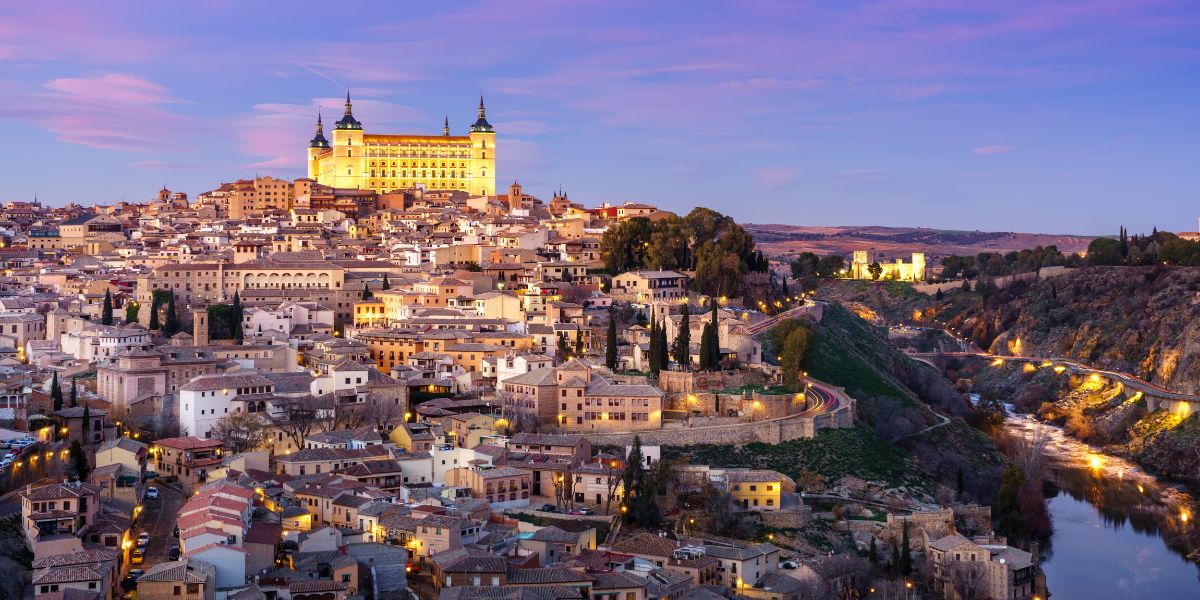
Toledo: The Heart of Sephardic Heritage
For centuries, the Jewish community of Toledo co-existed and prospered with their Christian and Muslim neighbors. During the 12th and 13th centuries, the Jewish Quarter of Toledo flourished, becoming the most populous and wealthy Jewish city in the Kingdom of Castile, offering its residents a market, synagogues, ritual and public baths, bread ovens, and even palaces! Today, visitors can still visit two surviving synagogues – the Santa Maria Blanca Synagogue and the El Tránsito Synagogue, which both function as museums dedicated to preserving the ancient community’s memory through religious artifacts, documents, art, and even archeological remains.
Exploration of the Santa María la Blanca Synagogue
4 Calle Reyes Católicos, Toledo
This historic synagogue is a prime example of Toledo’s unique melting pot of Christian, Islamic, and Jewish Sephardic culture. The house of worship, originally known as the Ibn Shushan Synagogue, is estimated to have been built in the late twelfth century or early thirteenth century by Moorish architects whose roots greatly influenced the synagogue’s design and interior decor which was accomplished using Mudéjar and Almohad construction techniques and style.
While initially built as a synagogue to serve Toledo’s Jews, it was expropriated to the catholic church after pogroms in 1391 and officially consecrated as a church named Santa Maria la Blanca in the early 15th century. Later in 1550, three apses designed in the Renaissance style were added to serve as chapels that are still visible to this day! The former synagogue also served as army barracks, a warehouse, and a dance hall until 1856 when it was declared a national memorial site and restored to its former glory.
The Santa Maria La Blanca synagogue is the oldest in Europe and is still intact. While it doesn’t hold any religious services, the former synagogue is now a museum preserved by the Catholic Church and operated by the Archbishop of Toledo.
You can explore the building’s turbulent history, learn about the Jewish community that it once housed, and marvel at the exquisite architecture and decor every day between 10 a.m. and 5:45 p.m.
Visit the Sephardic Museum in the Transito Synagogue
Calle Samuel Levi S/N, 45002 Toledo
El Tránsito Synagogue is another stunning piece of Spanish Jewish history in Toledo’s old Jewish Quarter that dates back to 1357. Like many other synagogues in Spain, the expulsion of Jews in 1492 led to the house of worship changing hands over the centuries, including being repurposed into a hospital, a church, and military barracks.
While the synagogue features an unassuming brick and stone exterior, the inside boasts spectacular Islamic and Christian-influenced architecture and decor, such as Nasrid-style stucco, multi-foil arches, and a Mudéjar ceiling.
In 1964, a decree was made to establish the Museo Sefardí as the National Museum of Hispano-Jewish Art in order to preserve and commemorate Spain’s Jewish heritage, opening its doors to the public in 1971. Visit the museum and discover items from Mesopotamia, antique coins, tombstones Jewish marriage contracts, liturgical utensils, maps, archaeological findings, and more.
The El Greco Museum
P.º del Tránsito, s/n, 45002 Toledo
Cap off your tour of Toledo with an exclusive after-hours tour of the El Greco Museum that places an emphasis on Jewish artists who were influenced by his works, such as David Bomberg, Chaïm Soutine, and Marc Chagall.
Located in Toledo’s Jewish Quarter, the El Greco Museum is a single-artist museum that opened in 1910. Art enthusiasts will enjoy exploring and learning in-depth about the works and life of El Greco, born Domenikos Theotokopoulos, whose art inspired many of the world’s most renowned artists in the late 19th and 20th centuries and who was pivotal in the spread of Cubism.
The museum exhibits numerous works by El Greco as well as canvases by other Spanish painters, furniture from that era, and pottery from Talavera de la Reina – a municipality in Toledo famous for its ornate glazed tilework. In addition, visitors can take part in educational workshops for adults, families, and children.
During the tour, your guide will navigate you through El Greco’s life as an artist, his works, influences, and those whose art he inspired to create an immersive and unforgettable evening of art and culture!
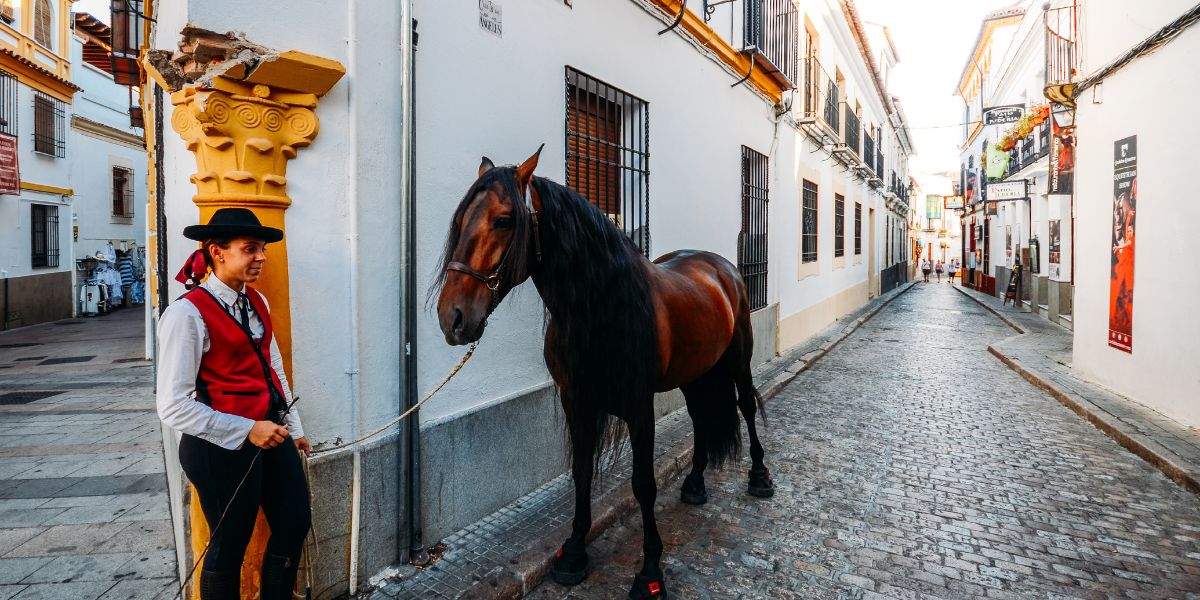
Córdoba’s Jewish Quarter: A Journey Through Time
La Juderia is a UNESCO Heritage Site located in the historic center of Cordoba, which was the cornerstone of Jewish life in the area between the 10th and 15th centuries. Here, you walk in the shoes of the Jews who lived and prospered in Cordoba hundreds of years ago while you meander through the narrow medieval streets, view the charming Andalusian architecture, and stumble across some of the city’s must-see sites:
Municipal Souk—One of the first craft markets in Spain, it has been declared a Site of Cultural Interest. Here, you can find artisan crafts, including ceramic and leather goods.
The Córdoba Synagogue – This is one of just three synagogues in Spain from pre-Inquisition times that remain intact and well preserved.
Andalusi House – A beautifully restored 12th-century house that aims to recreate the medieval Muslim culture that dominated at the time. The structure features a stunning inner courtyard, a fountain, and historical artifacts.
Maimonides Square – Known as Plaza Maimónides, this square owes its name to the influential Jewish philosopher and doctor Maimonides, or Moshe ben Maimon, who lived in Cordoba during the 12th century.
Private Viewing of the 14th-Century Córdoba Synagogue
- Judíos, 20, Centro, 14004 Córdoba
Dive into the spiritual center of Cordoba’s Jewish community by visiting the Córdoba Synagogue – the only preserved synagogue in the Andalusian area of Spain after the expulsion of the Jews in 1492. Today, it is considered one of the most significant synagogues in Spain!
The synagogue was designed in the Mudejar style by Issac Mojeb, and the Moorish inspiration can be seen very clearly with the multi-bulbous arches for décor, in windows and doorways, intricate mosaics, relief designs, geometric patterns with stars; organic vegetal forms and carved Hebrew inscriptions.
When you book a Jewish heritage tour in Spain with Gil Travel, you will get access to a private viewing of the synagogue where you can go back in time and delve into the history and culture of the Jews who used this synagogue as a house of worship all those centuries ago.
Enjoy a Sephardic-Inspired Dining Experience
Casa Mazal – C. Tomás Conde, 3, Centro, 14004 Córdoba
Feeling famished after a long day of touring Cordoba? Stop by this centuries-old courtyard house in the heart of the Jewish Quarter, and you will find Casa Mazal – a restaurant offering a taste of the culinary traditions of Sephardic (Judaeo-Spanish) and Al-Andalus (Arabic-Analisian) and classic Andalusian cuisine.
Whilst the restaurant itself is not kosher, the dishes do not include pork, shellfish, and other foods restricted by Jewish tradition.
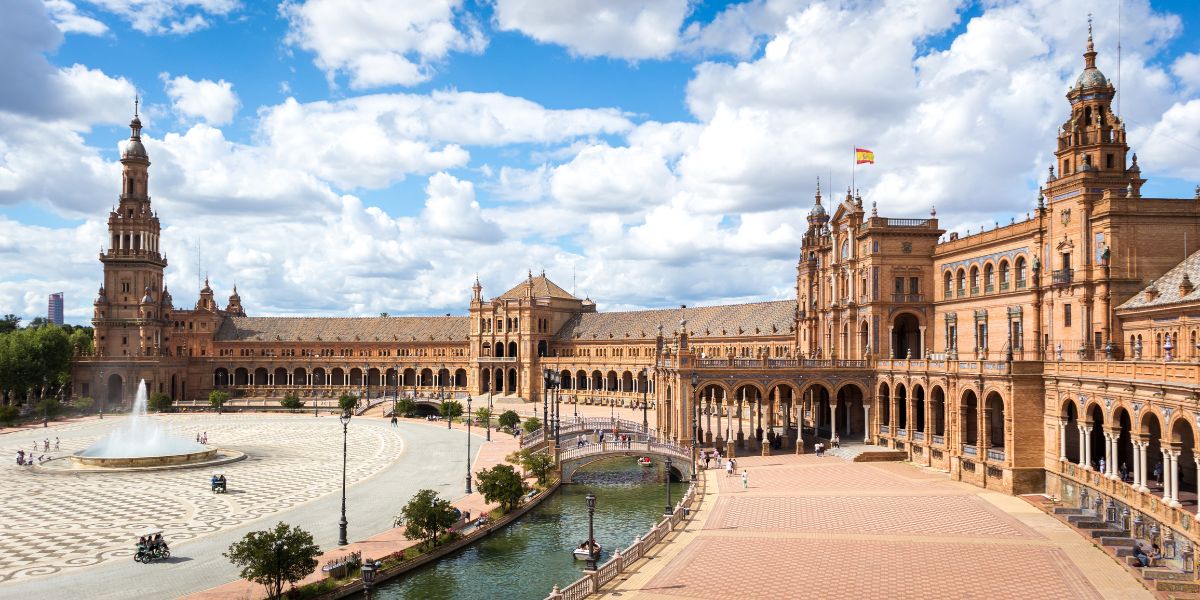
Seville’s Hidden Jewish Treasures
Like Toledo, the Jews of Seville are said to have settled in the ancient city shortly after the destruction of the Temple of Jerusalem. Through centuries of Muslim and Christian rule, the Jewish community experienced long periods of peace and great prosperity, producing prominent theologians, scholars, influential businessmen, scientists, and physicians. At its peak, between 6,000 and 7,000 Jewish families lived in Seville, making it the second-largest Jewish community in the Iberian Peninsula, after Toledo.
The former Jewish Quarter, now known as Barrio Santa Cruz, is a labyrinth of shady alleyways, whitewashed facades, fragrant flowers, and plazas that give visitors a glimpse into how the Jews of the Middle Ages lived. Evidence of Jewish life in Seville is scant, with all four of the city’s synagogues having been turned into churches – church of St. Bartholomew, convent Madre de Dios, Plaza de Santa Cruz (formerly the church of Santa Cruz), and Santa Maria la Blanca.
However, three unexpected sites in Seville have clear Jewish connections you can find if you know where to look! First, if you look at the pedestal of the mausoleum built by Alfonso X in the cathedral, you can see a Hebrew inscription indicating the date of the king’s death according to the Hebrew calendar. The cathedral treasury also has silver keys with two Hebrew inscriptions, which translate to “God will open, the King will enter” and “the King of Kings will open, the King of the whole earth shall enter”.
The second site can be found in the Archeological Museum where three seals from the 12th century belonging to Spanish Jews are on exhibit. Lastly, the Archives of the Indies has a copy of Abraham Zacuto’s perpetual almanac used by Christopher Colombus and Vasco da Gama.
VIP Access to Recently Discovered Medieval Mikvahs
Mikvahs in Spain are a rarity, with most Jewish establishments having been destroyed during the Inquisition or converted for other purposes, such as churches. Peeling away the years of covering up and repurposing these once holy Jewish sites takes someone with knowledge of the local Jewish history. Below are the four remaining mikvahs in Spain that you can see on your Jewish heritage tour in Spain.
- A prime example of a hidden Jewish site is the remains of a mikveh found in a Seville bar in the Jewish Quarter across from what was once a synagogue. The mikveh is thought to be at least 700 years old and was found when the owners decided to excavate the area to make space for a storage room. Unfortunately, no action has been taken to restore the mikveh and it is still being used as the bar’s storage space, where the remains of the ritual bath can be seen to this day.
- A property developer from Ubeda stumbled upon a centuries-old mikveh in 2006 and took it upon himself to save this rare piece of Spanish Jewish history and restore it. The site, which consists of a hidden synagogue called “Sinagoga del Agua” and a house, has several wells, a mikveh, a women’s gallery, original columns, giant urns, a kitchen, and ovens.
- In Girona, Catalonia, a mikvah was found in 2014 during an excavation of what was once the city’s last synagogue, built in 1435. The ritual bath is believed to have been used by the community of around 20 families until its expulsion in 1492 when they were forced to sell the synagogue before escaping.
- The last mikveh known is located in Besalu and is one of the best-preserved mikvehs in Catalonia, much less Spain. The mikveh is housed in a barrel-vaulted underground room built from carved stone in the Romanesque style, with water sourced from the adjacent river. The ritual bath, dating back to the 12th century, was rediscovered in the 20th century under the remains of a synagogue, which was hidden under a modern building.
When you embark on a luxury Jewish tour of Spain with Gil Travel, you will be given VIP access to some of these ancient mikvahs with a local guide who will be able to convey the history and significance of these ritual baths that once served thousands of Jews across Spain.
Tour of the Centro de Interpretación de la Judería
Ximénez de Enciso Street, Santa Cruz District, 22-ACC, 41004
Step into the Seville Jewish Quarter Visitors Center for a comprehensive look into the history, traditions, and culture of Seville’s Jewish community and the changes that took place within its Jewish Quarter from its beginnings in the Middle Ages to the present day.
The center works to memorialize and pay homage to Spain’s diminished and largely hidden Jewish heritage by helping visitors envision what life was like through artifacts and historical objects that paint the story of the Jewish Quarter and its everyday inhabitants and most prominent figures, their social and cultural achievements, and the persecution of Jews that took place within its walls.
In the center’s Spanish painting collection, “The Expulsion of the Jews from Seville” by Joaquín Turina Areal stands out as one of the few works of art that touches on the sensitive subject of the expulsion of Spain’s Jews and the sorrow of losing yet another homeland.
Exclusive lecture by a local historian on Seville’s Jewish past
Eager to delve deeper into the history of Seville’s Jews and their impact on Andalusian culture? Gil Travel will organize a special lecture with a local historian who will paint an in-depth picture of the lives, culture, traditions, and contributions of the Sephardic community of Seville. You can expect to hear insightful anecdotes and captivating storytelling you won’t find in any museum!
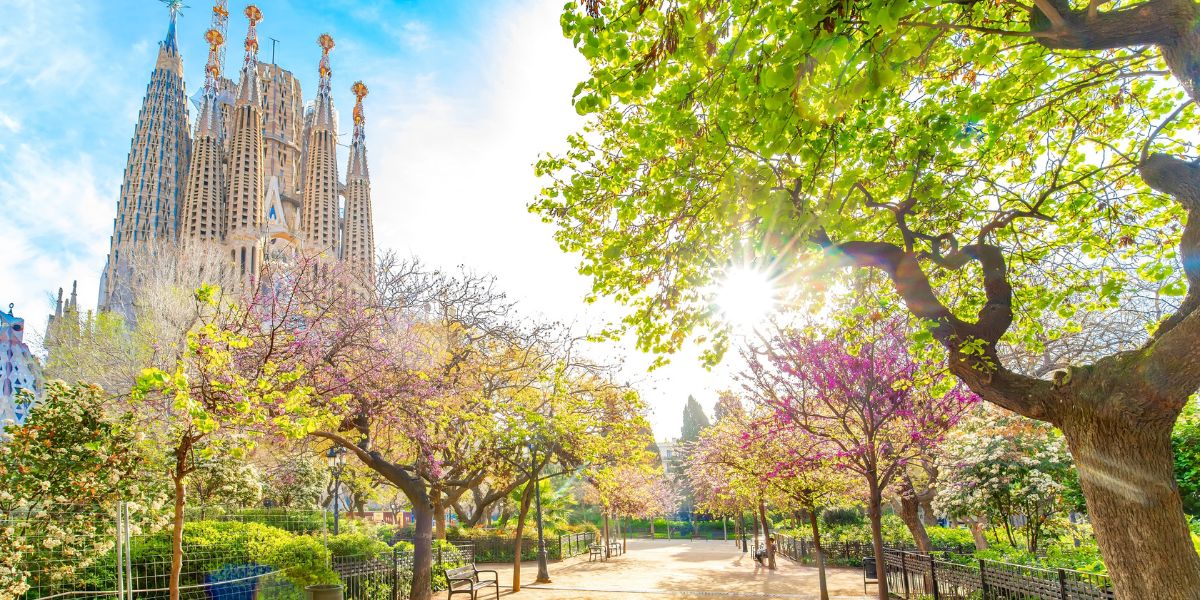
Barcelona’s Call: Uncovering Catalonia’s Jewish Legacy
During the golden period of Spanish Jewish history, Barcelona had the largest and most important community under the rule of the Crown of Aragon. At the time, the Jews of Barcelona represented one of the oldest and most influential communities in all of Jewish Europe, occupying highly regarded professions such as doctors, merchants, philosophers, and moneylenders.
The heart of Barcelona’s Jewish community is the “El Call” – a term which refers to the quarter where Jews lived between the 7th and 14th centuries. It is located in the Gothic Quarter, which consists of the oldest parts of the city, including remains of a Roman wall and other medieval landmarks. An interesting fact about the architecture in the Gothic Quarter is that despite its name, many of the buildings were rebuilt, modified, and even newly built in the neo-Gothic style during a beautification project the city undertook in the late 19th century and 20th century.
Although most of the Jewish population was exiled in 1492 during the Inquisition, there has been a major Jewish revival over the last few decades, with descendants of Sephardic Jews returning to their homeland from North Africa, Latin America, and the Middle East. Today, Barcelona is home to several active synagogues, kosher restaurants, and the only Jewish school in Spain.
Private Tour of the Ancient Synagogue of Barcelona
Carrer de Marlet, 5, Ciutat Vella, 08002 Barcelona
This medieval house of worship known locally as Sinagoga Major de Barcelona, dates back to as early as the 3rd century, making it the oldest in Spain and one of the oldest synagogues in Europe. Thousands of the city’s Jews used this synagogue as a social and spiritual center until their expulsion in 1492.
When it was rediscovered in 1987 by Jaume Riera y Sans and Miguel Laffa, multiple stories had been built on top, with what little remained of the once grand house of worship sitting in a basement filled with debris. When the building finally went up for sale, Laffa purchased and restored it.
Since 2002, visitors have been allowed to explore the revived Ancient Synagogue, attracting thousands each day! While no regular prayer services are held, Bar Mitzvahs, weddings, and other festive occasions are held in the Ancient Synagogue, providing a unique and meaningful experience for those passionate about Spanish Jewish history!
Embark on a private tour of the Ancient Synagogue of Barcelona during your Jewish heritage tour of Spain for a chance to learn not just about the synagogue and its history but also about the Jews in medieval Barcelona, their culture, customs, and traditions, and how they used this ancient house of worship as their religious and social center.
Visit the MUHBA El Call – Barcelona’s Jewish History Museum
Placeta de Manuel Ribé, 3, Ciutat Vella, 08002 Barcelona
Dedicated to preserving and promoting Barcelona’s deep Jewish roots, the MUHBA in El Call museum does this by showcasing everyday objects connected to the city’s ancient Jewish community that date back to the 13th and 14th centuries.
Among the museum’s numerous exhibits, you can find treasures like Khanukiyyes dishes decorated with Hebrew characters, a copy of an illustrated Jewish manuscript, the 15th-century Sarajevo Haggadah, and two centuries-old tombstones with Hebrew inscriptions. The temporary exhibits reflect the importance, contributions, and influence of Barcelona’s Jewish Quarter in medieval Judaism.
For a more interactive experience, take part in one of the museum’s exciting workshops, which include guided tours of the Jewish Quarter, mornings in El Call (walks and discussions about medieval Barcelona and the Jewish community), talks by Hebrew experts, tastings of Catalan-Jewish dishes, and Jewish storytelling sessions.
Bespoke jewelry workshop inspired by Sephardic designs
Take a break from touring and get creative by taking part in a jewelry workshop, where you can let your talent shine by designing your very own handmade trinkets inspired by Sephardic designs!
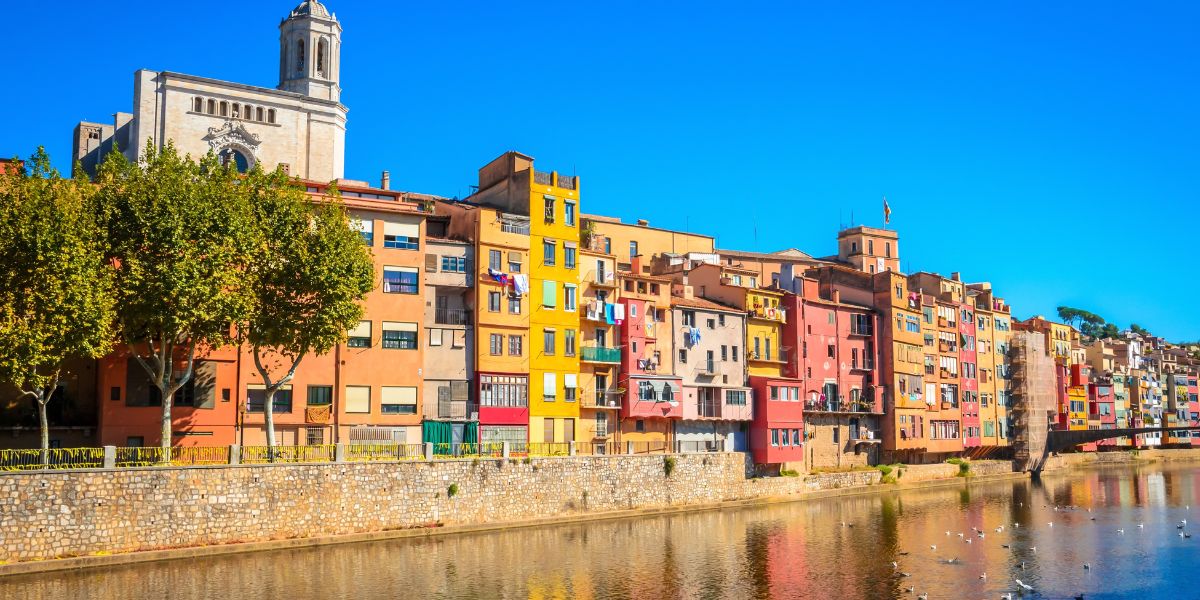
Girona: Birthplace of Kabbalah
Mystified by Kabbalah? This Jewish doctrine strives to interpret the nature of God, the world, and its mysteries through the interpretation of sacred texts that are based on myths and wisdom.
Between the 13th and 15th centuries, Spain, particularly Barcelona and Girona, became the epicenters of Kabbalistic thought and writings. The Kabbalah movement in Girona was established by the disciples of Rabbi Isaac the Blind. Much of the terminology and basic ideas that endured in Kabbalah teachings during the next seven centuries were cultivated here.
These Gironese mystics played a crucial role in transforming Kabbalah from a doctrine meant to be kept secret and taught only to a select few into a widely acknowledged spiritual and intellectual doctrine within medieval Jewish culture that is still studied and practiced to this day.
Exploration of the Museum of Jewish History
Carrer de la Força, 8, 17004 Girona, Spain
Nestled in the Jewish Quarter of Girona, The Museum of Jewish History is part of the Bonastruc ça Porta Centre – a building complex that housed the synagogue, mikveh, and other communal areas used by Girona’s Jewish community until the 15th century.
The goal of the museum’s creation was to preserve and reflect the history and heritage of the Jewish communities of Catalonia, which made great contributions to the history of the country and its cultural and scientific growth.
While touring the museum, you can delve into Catalonia and Girona’s Jewish heritage through eleven fascinating exhibits: Community life, Festivals & traditions, The life cycle; The Jewries, The Diaspora, The synagogue, The cemetery, The cultural heritage, Daily bread, Cultural coexistence, and Jewish converts and the inquisition. These carefully curated exhibits allow visitors to explore all aspects of life, culture, and history of the Jewish communities of Catalonia and Girona during medieval times.
Guided Tour of the Restored Jewish Quarter
While the first documented mention of a Jewish community, 25 families, in Girona dates back to the year 888, Girona’s Jewish Quarter was only established later in the 12th century. Architecture aficionados will appreciate Girona’s Jewish Quarter, known as “El Call,” as it is the most exciting part of the city in terms of its architecture, being one of the most well-preserved in all of Europe!
It is made up of a labyrinth of narrow streets, houses, staircases, arches, and patios. One of the main buildings is the Centre Bonastruc ça Porta, which is located in what was the last synagogue in the city and is now home to the Jewish History Museum and Institute of Nahmanides Studies.
The oldest evidence that proves the passage of the Jewish community in Girona is a preserved document dating from the year 888 in which the presence of 25 families is mentioned for the first time.
Private Kabbalistic Meditation Session in a Historic Setting
Kabbalah offers many meditation techniques rooted in the foundation that you can access God through focused meditation and contemplation to deepen your perception and reach your full potential. Whether you are an observant Jew or not, you can get in touch with your spiritual by taking part in a Kabbalistic meditation session in a historic location in the city that pioneered, developed, and spread this mystical doctrine!
Luxury Accommodations and Exclusive Experiences
When you embark on a luxury Jewish heritage tour of Spain, you will have no short supply of luxurious accommodations to rest your head after a long day of exploring! Below are a few of our favorite hotels that meet the highest of standards!
5-Star Hotels with Historical Significance
Mercer Hotel Barcelona – Carrer dels Lledó, 7, Ciutat Vella, 08002 Barcelona
Mercer Barcelona is a 5-star boutique hotel in the heart of Barcelona’s Gothic Quarter in a group of historic buildings restored by renowned architect Rafael Moneo. The hotel, built on a part of the Roman wall of ancient Barcino, preserves remains from several historical periods of enormous heritage value, including the medieval arches and the original 12th-century frescos.
Historical features are evident in virtually every area of the hotel, making any stay here a one-of-a-kind experience!
Hotel Alfonso XIII – C. San Fernando, 2, Casco Antiguo, 41004 Seville
This iconic hotel is located in the heart of Seville in the Santa Cruz quarter, making it a top choice for visitors taking a Jewish tour of the city’s Jewish Quarter! The historic building was commissioned by the former King of Spain, Alfonso XIII, to host international dignitaries during the 1929 Ibero-American Exhibition. What sets this luxury hotel apart from others in the area is its stunning architecture and Moorish detailing that beautifully showcase Andalusian design and heritage.
When you decide to start your Sephardic Jewish heritage journey with Gil Travel, you will be treated to exclusive cultural experiences that will take your trip to the next level. These include private concerts featuring traditional Sephardic music and tailored wine tastings that highlight kosher Spanish wines.
Whether you have Sephardic or Ashkenazi heritage, anyone can appreciate the unique history and relationship Spain shares with its ancient Jewish community, who influenced the country’s culture, history, and society in innumerable ways! If you’re interested in diving into Spanish Jewish history, there is no better way to do it than with a private Sephardic heritage tour, where you can explore your roots by gaining deep cultural insights through the guidance of local experts and exclusive experiences that are customized to your preferences and needs. Get in touch with Gil Travel to start planning your very own personalized luxury heritage trip for a chance to make unforgettable memories and learn about your Sephardic heritage like never before!
